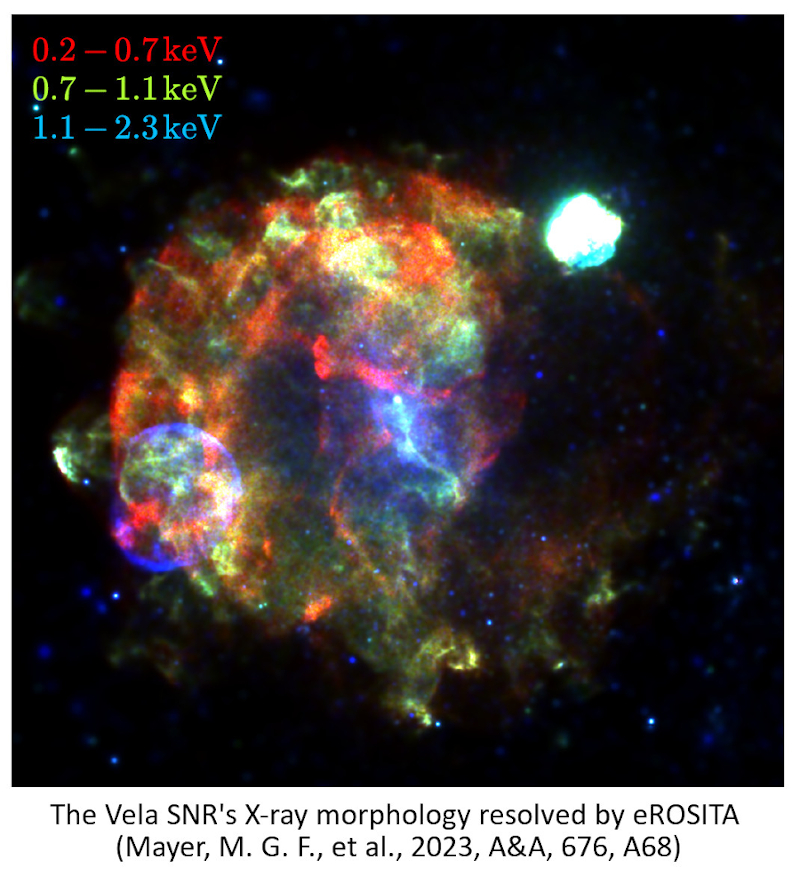
 Credit: Mayer et al. 2023 (Astronomy and Astrophysics, vol. 676, A68)
Credit: Mayer et al. 2023 (Astronomy and Astrophysics, vol. 676, A68)
Vela in Full Color
eROSITA, maps the entire Universe from a lonely outpost at L2, a million miles from earth. The image above is based on eROSITA observations obtained between May 2020 and November 2021; colors represent X-rays of different energies, red low energy, green medium energy and blue high energy. This color image shows a wonderful field of X-ray fireworks, a region of sky featuring not one but three separate supernova remnants, hot, glowing clouds of sparks left behind by the titanic explosions of stars. All three stars exploding in an instant, as the Galaxy measures time, like some grand finale of a cosmic fireworks display. The largest nebula in this image is the Vela Supernova Remnant, produced by the collapse and explosion of a massive star, about 10-20 times the mass of the Sun, which occurred about 12,000 years ago. It appears so large because it's so close to us, only about 800 light-years away. Its large angular size makes it difficult to obtain a complete high-resolution view of the remnant with other X-ray telescopes with smaller fields of view, but eROSITA maps the entire remnant in stunning clarity. The Vela supernova remnant appears to overlap two other supernova remnants, the Puppis A remnant to the upper right and the "Vela Junior" remant (discovered only 20 years ago) to the lower left. Vela Junior is believed to be about 600 lightyears distant, and light from the explosion is believed to have reached earth about 700 years ago (although there is no written record that the explosion was viewed by humans, there is evidence buried in the ice of Antarctica of chemical transformations produced when the high-energy radiation from Vela Junior hit the atmosphere of earth). All three supernova remnants also contain tiny, ultracompact, ultra-high-density neutron stars, near the centers of the nebulae. The eROSITA observations allow a detailed examination of how these catastrophic stellar explosions interact with their host galaxies, and how they seed their galaxies with life-giving chemicals. Sadly, eROSITA science operations have been paused since February 26, 2022.
Published: September 18, 2023
<
HEA Dictionary ● Archive
● Search HEAPOW
● Other Languages
● HEAPOW on Facebook
● Download all Images
● Education ● HEAD
>

Each week the HEASARC
brings you new, exciting and beautiful images from X-ray and Gamma ray
astronomy. Check back each week and be sure to check out the HEAPOW archive!
Page Author: Dr. Michael F. Corcoran
Last modified Monday, 26-Feb-2024 17:47:34 EST


